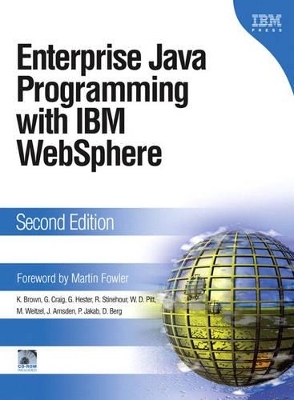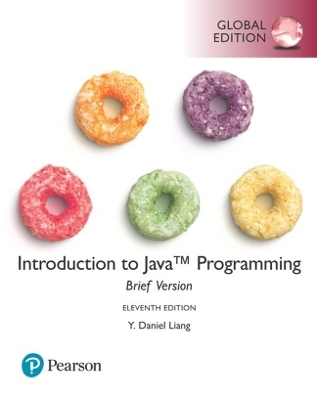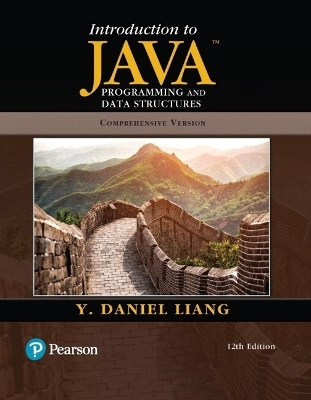
Enterprise Java Programming with IBM WebSphere
IBM Press
978-0-321-18579-2 (ISBN)
- Titel ist leider vergriffen;
keine Neuauflage - Artikel merken
Enterprise Java Programming with IBM WebSphere, Second Editionby Kyle Brown, Gary Craig, Greg Hester, Russell Stinehour, W. David Pitt, Mark Weitzel, JimAmsden, Peter M. Jakab, Daniel BergForeword by Martin Fowler Enterprise Java Programming with IBM WebSphere, Second Edition is the definitive guide tobuilding mission-critical enterprise systems with J2EE, WebSphere, and WebSphere StudioApplication Developer. Fully updated for Versions 5.x of WebSphere Application Server andWebSphere Studio Application Developer, it combines expert architectural best practices with acase study that walks you through constructing an entire system. The authors are an extraordinary team of WebSphere insiders: developers, consultants,instructors, and IBM WebSphere development team members. Together, they offer unprecedentedinsight into the use and behavior of WebSphere's APIs in real-world environments--andsystematic guidance for delivering systems of exceptional performance, robustness, and businessvalue. Coverage includes-- *Practical introductions to J2EE, WebSphere Application Server 5.0
, and Web application architecture *Detailed coverage of Web application construction, including MVC partitioning with Struts, servlets/JSP, and session management *Step-by-step guidance for building and testing application business models, including JUnit testing *In-depth insight into EJB architecture, including transactions, security, and advanced object relational mapping *Web services: examples and best practices leveraging WebSphere Application Server 5.x's latest enhancementsCD-ROMs Included The CD-ROMs contain trial copies of IBM WebSphere Studio Application Developer (Version 5.0.2),IBM WebSphere Application Server (Version 5.02), and DB2 Universal Database, Personal Edition(Version 8.1.2) for Microsoft Windows 2000/XP. The CD-ROMs also include source code for thecase study examples used in the book.
About the AuthorsKYLE BROWN is Senior Technical Staff Member for the IBM Software Services for WebSphere Group.DR. GARY CRAIG, President of Superlative Software Solutions, has co-authored several books onEnterprise Java. GREG HESTER is CTO of CrossLogic. RUSSELL STINEHOUR is CEO of CrossLogic andW. DAVID PITT is Principal Consultant at CrossLogic. MARK WEITZEL is a Senior Software Engineerand Web services specialist with IBM Software Group. JIM AMSDEN is a Senior Software Engineerin IBM Software Group specializing in Model Driven Development. PETER M. JAKAB, President ofObjectSpheres Software Solutions, consults and mentors on IBM WebSphere products. DANIEL BERGis Senior Software Engineer, J2EE Tools Team Lead, at IBM Research, Triangle Park Lab.
Foreword.
Preface.
1. Introduction.
Why Software Development Must Consider the Whole Enterprise. How Iterative Development Addresses Key IT Management Issues. Today's Enterprise Applications Have New Requirements. What Is the Starting Point? What Is a Layered Architecture? Layered Architecture Benefits. Summary.
2. Introduction to the Case Study.
Case Study Analysis and Design Artifacts. Use Case Definitions. Designing the Case Study Domain Model. Using the Case Study in Our Book. Summary.
3. J2EE Overview.
Why J2EE? J2EE Architecture. J2EE Platform Roles. J2EE Versions and Evolution. A J2EE Perspective. Summary.
4. What Is WebSphere?
WebSphere Foundation and Tools. The WAS Core Architecture. Administering a local WAS Server. Leveraging the Scalability of WAS ND. Summary.
5. Presentation Layer Patterns.
Java User Interface Technologies. Decoupling the User Interface. Mediating Logical View Logic. Summary.
6. Servlets.
HTTP Technology Primer. Servlet Concepts. Servlet Life Cycle. An Example Servlet. Web Deployment Descriptors. Filters. Servlet API Classes and Interfaces. Summary.
7. Developing Servlets Using IBM WebSphere Studio Application Developer.
The IBM WebSphere Studio Family of Tools. Building an Example Servlet with WSAD. Some Problems with This Example. Summary.
8. Testing Servlets Using WSAD.
Edit the Web Deployment Descriptor. Summary.
9. Managing Session State.
Some Client-Side Session Approaches. Servlets and Session State. Choosing the Right Approach. Session Persistence. Summary.
10. JavaServer Pages Concepts.
Page Templates and Server-Side Scripting. A Short History of Java Server Pages. Page Compilation—Runtime View. JSP Syntax. Scripting Elements. Directives. JSP Documents. Roles for JSP. Summary.
11. Tag Libraries and Custom Tags.
Introduction. Basic Model for Custom Tags. JSTL and Other Widely Used Tag Libraries. Writing Tag Handlers. Tag Library Descriptor (.tld). Taglib Directive and Coding Custom Actions. Support for Custom Actions. Summary.
12. Design Considerations for Controllers.
Where Do Controllers Come From? Controller Design Alternatives. Exception Handling. Logging. Servlet Filters. Summary.
13. Developing and Testing JSPs in WSAD.
Another Look at MVC. JavaBeans, Introspection, and Contracts. Building Applications Using JSPs with WSAD. Editing JavaServer Pages. Validating the JSP Page. Running on the Server. Debugging the JSP. Simplifying JSPs. XML compliance. Summary.
14. Apache Struts as an MVC Framework.
Road Map. Why Do You Need a Framework? What Is Struts? A Simple MVC Struts Example. Struts Best Practices. Summary.
15. XML/XSL Web Interfaces in WSAD.
Strategy for Using XML/XSL for Web Interfaces. Example XML/XSL Web Interface with WSAD. Creating the XSL File. Enhanced Example of XML/XSL Web Interface with WSAD. Dynamic Example XML/XSL Web Interface with WSAD. When to Use XML/XSL for Web Interfaces. Summary.
16. Developing and Testing the Domain Model.
The Domain Model Layer. The Data Mapping Layer. Testing the Model. Summary.
17. Unit and Functional Testing Applications in WSAD.
Overall Testing Approaches. What Is JUnit? A Simple Example. Unit Testing Containers with Cactus. Function Testing Applications in WSAD. Function Testing. What Is HttpUnit? The HttpUnit API. Following Links. Working with Forms. Working with Tables. Working with Frames. Working with a Document Object Model (DOM). Functional Test Design Considerations. Summary.
18. Supporting Enterprise Applications.
Another Look at the n-Tier Architecture. Why Aren't HTML, Servlets, and JSPs Enough? Object Distribution. Integration Styles and Messaging. Object Persistence. Objects and Transactions. Security in Enterprise Applications. Summary.
19. Basic EJB Architecture.
Core EJB Concepts. The EJB Types. Introducing the EJB Programming Model. 19.4EJBs—Distributed or Not? Basic Architectural Patterns for EJBs. The Role of Persistence. When Do You Need EJBs? Summary.
20. Developing EJBs with WSAD.
The J2EE Perspective. J2EE Projects. Creating a Session Bean. Testing the New Session Bean. Summary.
21. Testing and Debugging EJBs in WSAD.
Developing the Service Layer. Overview of the Testing Process. Summary.
22. EJB Client Development.
Using Servlets as EJB Clients. Building Java Application Clients. Applet Clients in WebSphere. Naming and the WebSphere Namespace. Creating a Test Client. Deploying Application Clients in WebSphere. Deploying and Running the EJB Client to the WebSphere Client Container. Some Design Points about EJB Clients. Summary.
23. Simple CMP Entity Beans.
Entity Bean Basics. CMP in WebSphere and WebSphere Studio. Creating a CMP EJB Using WebSphere Studio. The Parts of an Entity Bean. Deployment Descriptor. Summary.
24. CMP Mapping Strategies and Mapping in WSAD.
Databases, CMPs, and Maps. Multiple Mapping Back-end Support. Exporting Database Tables. EJB Query Language. Summary.
25. Advanced CMP Mapping.
Simple Mapping Rules. Object-Relational Basics. Concepts in EJB 2.0 Relationships. Associations in UML. Relationships in WSAD V5.0. Creating a Single-Valued Relationship. Creating a Multivalued Relationship. Read Ahead Hints. Mapping Relationships. Weak vs Strong Entities. EJB Inheritance in WSAD. Advanced EJB QL. Summary.
26. Bean-Managed Persistence.
Applying BMP. A Simple BMP Bean. Examining BMP Persistence. BMP vs CMP. Summary.
27. Introduction to Message-Driven Beans.
Java Messaging Service. JMS API Basics. Message-Driven Beans. Summary.
28. Transactions in WebSphere 5.0.
JDBC Transactions. Transactions and 2-Phase Commit. JTA and Transaction Demarcation. Enabling 2-PC in WebSphere 5.0. EJBs and Container-Managed Transactions. Participating in a Transaction. Using XA Resources with 2-PC in WebSphere. Transaction Settings for J2EE 1.3 in WAS 5.0. Advice on Using Transactions. Extended Transaction Settings in WebSphere. Special Transaction Considerations for JMS. Dealing with Concurrency. Summary.
29. J2EE Security in WebSphere.
J2EE Security Overview. J2EE Authorization. Securing Resources with WebSphere Studio. EJB Security Recommendations. Handling Instance-Based Security. GUI-Based Security. Summary.
30. Building Layered Architectures for EJB Systems.
Problems with an All-Entity EJB Solution. The Session Façade and DTO Solution. Design Points for Session Façades. Rules for Session Façades. Reasons for EJB Objects. A Simple Example from the Case Study. A More Complex Example. Mappers Revisited. Simulated Mappers. An Updating Example. Testing the Session Façade Example with JUnit. Running the Test Client. Rules for Creating Session Façades. Should Session Façades Return XML? Summary.
31. Implementing the Case Study User Interface.
User's Guide. Summary.
32. An Introduction to J2EE Web Services for WebSphere.
If Web Services Is the Solution, What's the Problem? Web Services Architecture. Web Services in J2EE. Web Services in WAS. The Standardization Nightmare. Summary.
33. Constructing J2EE Web Services for WebSphere.
Getting Started with Web Services. Building Web Service Clients. Summary.
34. Web Services Architectures and Best Practices.
Some Web Services Dos and Don'ts. Addressing the Limitations of Web Services. Choosing the Right Level of Granularity in SOA. Interoperability Lessons Learned. Summary.
35. A Final Look.
Application Layering. Case Study and J2EE Technologies. Tooling. A Parting Thought.
Appendix A: Installing Products and Examples from the CDs.
Installing the Products from the CDs. Installing the Case Study Examples.
Appendix B: Constructing J2EE Web Services Using WSAD 5.1.
What's New? Creating the RandomIDGenerator Service. Running and Testing the RandomIDGenerator Service. Using the Existing J2SE Client. Summary.
Bibliography.
Index.
| Erscheint lt. Verlag | 24.12.2003 |
|---|---|
| Verlagsort | Armonk |
| Sprache | englisch |
| Maße | 242 x 185 mm |
| Gewicht | 1601 g |
| Themenwelt | Informatik ► Programmiersprachen / -werkzeuge ► Java |
| Mathematik / Informatik ► Informatik ► Web / Internet | |
| ISBN-10 | 0-321-18579-X / 032118579X |
| ISBN-13 | 978-0-321-18579-2 / 9780321185792 |
| Zustand | Neuware |
| Informationen gemäß Produktsicherheitsverordnung (GPSR) | |
| Haben Sie eine Frage zum Produkt? |
aus dem Bereich

